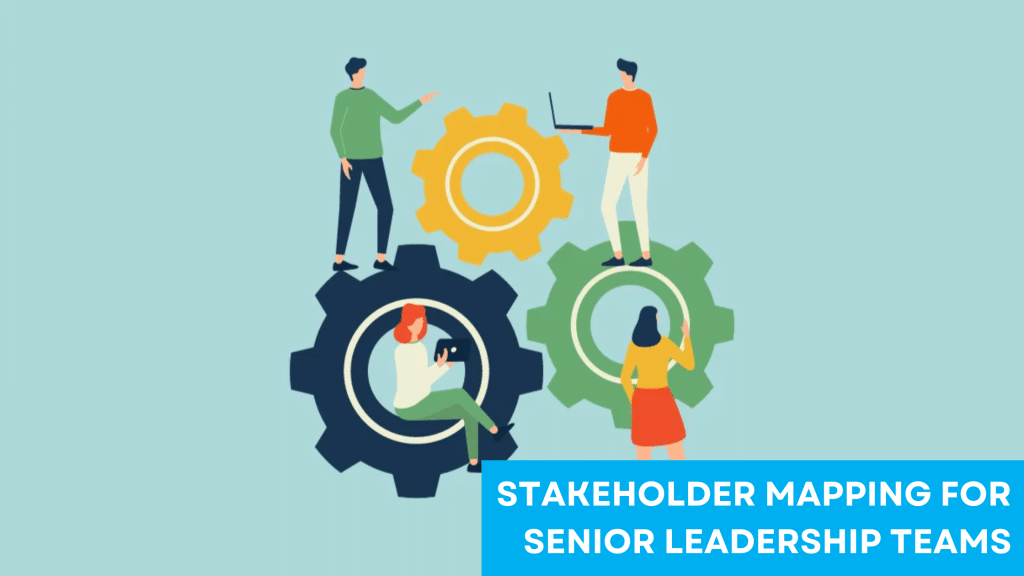Takeaways
- Stakeholder mapping helps senior leadership teams understand who has influence and interest in their projects.
- Visual categorization supports smoother communication and better planning.
- Different mapping methods exist, and picking the right one is important.
Stakeholder mapping gives leaders a clear view of the people who can affect or be affected by their decisions.
This process helps them spot potential challenges early and adjust plans as needed.
Using visual tools to group stakeholders by interest, influence, and impact makes teamwork easier.
Teams can see where extra communication or support is needed, helping to avoid misunderstandings or delays.
Tips for categorizing include considering awareness and support as well, as suggested in stakeholder mapping methods.
Senior leadership can use stakeholder maps as a communication aid.
This helps them proactively connect with key groups and streamline efforts across the organization.
Here are a few ways mapping supports leadership teams:
| Benefit | Description |
| Prioritization | Focus on stakeholders with the most influence or interest. |
| Efficiency | Faster and clearer communication plans. |
| Preparation | Anticipate and address stakeholder concerns in advance. |
Selecting the right stakeholder mapping strategy depends on your project goals and what your organization actually needs.
Using mapping practices outlined in stakeholder models can make a real difference for senior leadership teams.
Understanding Stakeholder Mapping for Senior Leadership Teams
Stakeholder mapping helps senior leadership teams see who has the most interest and influence in their projects.
It sharpens communication plans and boosts project success by making priorities clear.
Purpose and Benefits
Stakeholder mapping lets leaders identify, organize, and prioritize people or groups who have interest in the organization’s goals.
This process gives teams a visual summary showing how much power and influence each stakeholder has compared to their level of interest.
By understanding these relationships, leadership can take action to keep the most important stakeholders informed or engaged.
Effective mapping leads to better decision-making and helps avoid project risks from overlooked or unsatisfied parties.
Stakeholder mapping is also a key step in building trust.
It supports efforts to involve the right voices at the right time, which is especially important for big changes or sensitive projects.
For more on how mapping strengthens engagement, read this stakeholder mapping guide.
Key Concepts and Terminology
Several important terms help simplify stakeholder mapping:
- Stakeholder: Anyone affected by or able to influence a project (e.g., executives, customers, teams, regulators).
- Stakeholder analysis: The process of identifying and understanding stakeholder needs and influence.
- Key stakeholders: People or groups with the highest impact or interest in project outcomes.
- Stakeholder management: Steps taken to communicate and work with stakeholders, guided by mapping.
A common mapping tool is the power-interest grid.
In this grid, stakeholders are placed according to their level of authority and concern.
This layout helps leadership see where to focus communication and resources.
Tools such as visual maps or digital diagrams, described in this guide to stakeholder maps, make the process easier to manage.
Differences from Traditional Stakeholder Analysis
Traditional stakeholder analysis often looks only at simple lists or basic levels of support and resistance.
Senior leadership teams, though, need a mapping process that’s more detailed and strategic.
Maps create a clear, visual representation so leaders can see patterns that aren’t obvious from lists alone.
Leadership teams use stakeholder mapping to spot where support and influence are strong or weak.
They can quickly decide which relationships to build and what kind of engagement is needed.
This approach is key for large or complex projects where missing an influential stakeholder can delay or harm results.
Visual stakeholder maps help leaders move from analysis to action, improving communication and follow-up.
For details on how mapping supports deeper analysis, see this stakeholder mapping explanation.
Identifying and Categorizing Stakeholders
Senior leadership teams use stakeholder mapping to identify the right people and groups to engage during key projects and decisions.
This process focuses on finding individuals or groups who influence, use, or are affected by business actions, and then classifying them in useful ways.
Defining Key Stakeholders
A key stakeholder is anyone who can impact a project or is impacted by its results.
These may include senior executives, investors, employees, customers, suppliers, and regulators.
To define them, teams should ask: Who has the most to gain or lose?
Who makes critical decisions or controls resources?
Leadership teams often start with a wide list and then narrow it by role, influence, and interest.
Stakeholders can be direct (involved in the daily operations), or indirect (such as community groups or government agencies).
Focusing on key stakeholders ensures the team doesn’t overlook anyone vital to project success.
Stakeholder Segmentation Methods
Segmenting stakeholders helps in understanding their needs, interests, and influence.
A common way is to use a four-quadrant stakeholder map that rates each person or group by their level of influence and interest.
This map quickly shows which stakeholders need close management and which can receive less attention.
Stakeholders can also be classified by attributes such as power, urgency, and legitimacy.
For example, users of a product may have daily contact and valuable feedback, but hold little official power.
Segmenting makes it easier to analyze stakeholders and tailor communication strategies.
This step helps leadership allocate resources for engagement where they matter most.
Prioritizing Key Players
After segmentation, leadership teams need to identify key players.
These are stakeholders with the highest combination of influence and interest.
They’re often decision makers, major investors, or groups whose strong support is needed for success.
Prioritizing these individuals or groups ensures they are informed early and often.
A simple table can help:
| Stakeholder | Influence | Interest | Priority |
| Board Members | High | High | Key Player |
| End Users | Low | High | Monitor |
| Regulators | High | Medium | Engage |
By focusing resources on key players, senior leadership improves project alignment and increases chances of positive results.
Techniques such as stakeholder interviews and regular check-ins support proper prioritization.
Mapping Influence and Engagement
Senior leadership teams use stakeholder mapping to decide who holds the most influence and how to manage their relationships.
This method also helps identify the best engagement strategies for each group and clarifies who needs regular updates or closer attention.
Assessing Stakeholder Influence
Understanding influence means looking at how much power each stakeholder has over project outcomes.
Stakeholders might have formal authority, control resources, or shape public opinion.
Leaders rate influence by asking questions like: Does this person make vital decisions?
Can they impact success if not handled well?
To keep this process clear, teams often use a visual map called the influence-interest matrix.
This map places stakeholders into four categories based on their level of influence and interest.
A table like the following is useful:
| Level of Influence | Example Stakeholders |
| High | Board members, major donors |
| Medium | Department heads, regulators |
| Low | General staff, volunteers |
This structured approach helps leaders decide where to focus their efforts.
Stakeholder mapping tools make it easier to identify and chart these key players.
Stakeholder Engagement Strategies
Engagement is about more than just communication.
Different stakeholders need different approaches.
For those with the most impact, leaders should have regular meetings and active involvement.
Others might get newsletters or status reports only when changes happen.
Senior teams should tailor their engagement based on past interactions and current needs.
Using templates, checklists, and workflows adds consistency to this process.
Good engagement prevents misunderstandings and builds trust over time.
Key points for building strong stakeholder relationships:
- Prioritize personal interaction for high-influence stakeholders
- Use targeted communication for each group
- Adjust engagement methods as project needs change
A structured engagement strategy helps teams avoid surprises and maintain steady support from the most important groups.
Stakeholder mapping examples offer practical ideas for planning these interactions.
Classifying Stakeholders: Keep Satisfied vs. Keep Informed
Not all stakeholders want the same updates or involvement.
Senior leaders must divide stakeholders into groups such as “Keep Satisfied” and “Keep Informed.”
Keep Satisfied:
This group includes people with high influence but less interest in daily details, like major investors or directors.
Leaders should share key updates and consult them on important topics, but avoid overloading them with information.
Keep Informed:
These are stakeholders with lower influence but high interest.
Regular communication, like emails or briefings, ensures they feel included and aware of progress, which can improve morale and support.
A clear system to classify stakeholders guides how often and what to communicate.
For more on this approach, review this stakeholder map guide.
Effective Communication and Relationship Building
Building trust and a clear understanding with stakeholders is key for senior leadership teams.
Using the right channels, keeping a steady communication schedule, and tracking the impact can help organizations strengthen stakeholder relationships.
Communication Channels and Techniques
Leadership teams need to select communication channels that match stakeholder preferences and the type of information being shared.
Emails work well for formal updates and sharing documents.
Video calls and in-person meetings are better for complex conversations or when feedback is needed fast.
To keep messages clear, leaders should use simple language and focus on the main point.
Short presentations or visual aids, like charts, make complex topics easier to understand.
Two-way communication—such as Q&A sessions, surveys, or open forums—can encourage engagement and help gather useful stakeholder feedback.
Choosing the most suitable channel is important.
For guidance, many organizations use a stakeholder communication plan to decide what methods work best for specific groups.
Maintaining Regular Cadence
When you stick to a regular communication schedule, you build trust and keep stakeholders in the loop. That might mean sending out weekly or monthly status emails, holding quarterly reviews, or just setting up routine calls.
Consistency is key. If people know when to expect updates, they’re less likely to feel left out or confused.
How often you meet or send updates really depends on the project and how much involvement stakeholders want. Some, like investors or executive sponsors, probably need more frequent updates than others.
Leadership needs to stay flexible, though. If something urgent pops up, they should be ready to ramp up communication without hesitation.
Measuring Communication Impact
Tracking whether your communication is actually working matters. Leadership teams can use feedback surveys, stakeholder interviews, or just look at how many people show up to meetings.
Here are a few ways to measure effectiveness:
- Open and response rates for emails
- Attendance at meetings or events
- Quality and amount of stakeholder feedback
- Satisfaction scores from short surveys
These signals show what’s working and where things might need a tweak. With the data collected, senior leadership can improve their communication practices and stakeholder engagement to better meet everyone’s needs.

Integrating Stakeholder Mapping into Leadership Processes
Senior leadership teams use stakeholder mapping to make smarter decisions and improve workflows. By organizing and analyzing relationships, they can spot risks, support change, and build stronger project teams.
Building Stakeholder Mapping into Change Management
Change management relies on clear communication and support from the right people. Stakeholder mapping helps teams figure out who’ll be most affected and whose backing is crucial.
With a stakeholder map, leaders can design targeted communication plans. This approach helps reduce resistance and boost buy-in from anyone feeling uncertain or threatened by new initiatives.
Visualizing these relationships lets teams spot gaps or overlaps they might have missed. For example, when rolling out new software, a team can use stakeholder maps to address concerns early, plan training, and assign clear contacts for staff questions.
This saves time and lowers the chance of disruptions. If you want more details about mapping in change management, check out Simply Stakeholders.
Roles of the Project Team
The project team needs to keep stakeholder maps current and accurate. That means regularly reviewing who has influence or interest in the project.
By updating these maps, the team can spot shifting priorities or new risks before they snowball. Keeping maps up to date also helps assign roles, making it easier to delegate tasks to the right people.
When everyone knows their responsibilities, they can focus on work that matches their strengths. Regular team check-ins help with collaboration and make sure everyone’s aware of any changes in stakeholder needs or expectations.
For a deeper dive into identifying and engaging stakeholders, take a look at Borealis.
Driving Productivity and ROI
Stakeholder mapping gives teams a straightforward way to boost productivity and return on investment (ROI). When teams know their stakeholders, they can focus on what matters most and avoid wasting resources.
A clear map helps allocate time, money, and people to the activities with the biggest impact. Tracking stakeholder responses also lets teams see what’s working and adjust their strategies.
Leaders can use these maps to show value to sponsors and back up project decisions. Better engagement cuts down on delays and keeps projects moving, which saves money and bumps up ROI.
If you’re curious about how these maps drive results, have a look at Atlassian.
Conclusion
Stakeholder mapping gives senior leaders a clear view of who really shapes their projects. By sorting stakeholders into groups, teams can focus on what counts.
This approach helps teams communicate better. It also helps them avoid missteps that could slow things down.
Key Benefits:
- Better communication with important stakeholders
- Faster responses to changing needs
- Increased alignment within leadership teams
Stakeholder mapping isn’t just a one-and-done thing. Leaders should review and update their maps often.
This keeps the team ready for surprises and shifts in their environment. Honestly, it’s a bit of work, but it pays off.
For more details on stakeholder mapping strategies, check out this strategic guide for effective communication.
| Stakeholder Group | High Influence | High Interest | Needs Regular Updates |
| Senior Managers | ✔️ | ✔️ | ✔️ |
| Key Partners | ✔️ | ✔️ | ✔️ |
| External Experts | ✔️ | ❌ | ❌ |
When leadership teams map stakeholders, they engage the right people. This simple habit can drive better results and make leadership a lot clearer, even if it’s not always easy.



